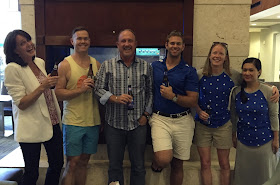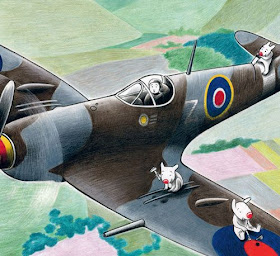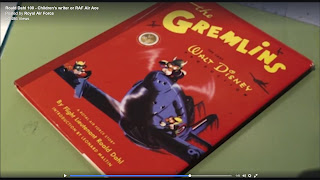A Training Travesty?
Hi Karlene,
My personal favorite is:
“I don’t know any of this stuff, but my friend told me Oklahoma is just a big party, so I can do that.”
Oklahoma? A party? It sounds ridiculous, but it makes more sense when you learn they get paid $98 a day as a per diem. Then they spend all their free time at the bar and the casino instead of with a textbook, and they frequently show up to training hungover. The trouble really comes when they start to do poorly.
Academy training is centered around the students’ success in passing, not necessarily their performance.
They frequently badmouth their instructors and blame their RPOs when they make mistakes. They can pretty much say whatever they want without fear of reprisal.
If the students make an offhand comment to us on the frequency or make a serious error (or several), immediately after the problem ends, we have to go to our supervisor’s office and explain what really happened, in case the instructor comes over to complain that we weren’t doing our jobs. This happens all the time.
They mix up left and right, north and south, and sometimes even vastly different aircraft types like the Cessna 172 and the Citation 750. They will get into situations where they have small VFR aircraft holding over the final approach fix, circling right under heavy jets, and not even realize what’s happening. Much of the time, if this were the real world, the student would be responsible for everything from numerous separation errors to midair collisions.
Of course, in a training environment, mistakes are to be expected. However, the students do not take their mistakes seriously, and they can do everything short of demanding someone be fired, whether the accusations are well-founded or not.
It gets to the point that we joke that we should find out what facility a person works at so we make sure not to fly there, but then the ongoing joke is ...
I am afraid to go public about these issues ...
because I am trying to become an air traffic controller, and I know it would hurt my chances of getting hired when I am already facing slim to impossible odds. The Academy can only accept a maximum of 1400 trainees per year, and 30,000 people applied to the most recent hiring bid. I applaud the CTI students who have been in Congress fighting for the return of our hiring preferences.
I resolve to set a different example if I am ever lucky enough to attend. I am personally aware that most of our air traffic controllers are the best in the world. They do a difficult, important job that only a small fraction of people can do. But with Academy training the way it is, the burden falls mostly on the facilities to wash out the incapable candidates, which costs more time and taxpayer money. I can only hope that Academy training will improve and that the FAA will focus on hiring and generating the world’s most skilled and qualified air traffic controllers.
Best regards and safe travels."
Flight For Sanity coming soon....
Last week I wrote about non-reporting cultures. Hard to believe that we live in a world where safety is sacrificed because of lack of reporting cultures. Then look what should end up in my inbox. Fear prevails in many companies. When employee's fear, nothing will be fixed. Below is the letter I received.
Hi Karlene,
I have been following your blog posts last week regarding safety culture and reporting systems. Your posts have encouraged me to come forward about an ongoing safety issue that has the potential to affect a large percentage of the aviation industry.
I am a pilot, but I have a strong interest in air traffic control. I am employed at the Mike Monroney Aeronautical Center (usually known as the FAA Academy) as a Remote Pilot Operator. An RPO is essentially a “pretend pilot” who simulates radio calls for aircraft and inputs commands into a simulator so that ATC students can train.
I am a pilot, but I have a strong interest in air traffic control. I am employed at the Mike Monroney Aeronautical Center (usually known as the FAA Academy) as a Remote Pilot Operator. An RPO is essentially a “pretend pilot” who simulates radio calls for aircraft and inputs commands into a simulator so that ATC students can train.
 |
Photo from CareerATC.com |
The Academy is their first stop before these students are sent to various facilities around the country. It is split into three areas of training: Tower, Enroute, and Radar. Students in Radar training are mostly current tower controllers who are learning to work in a TRACON, but students at Tower and Enroute were hired in one of the past two hiring bids, so they are considered “off the street.” A few of them happen to be pilots or students who studied air traffic control in college, but such experience was not required for their selection.
Before these OTS students begin working simulated traffic, they attend a class called Basics, which is essentially a combination of private pilot and instrument ground school. They learn aircraft types, performance characteristics, the pilot’s environment, how an instrument approach works – just about everything from the ground up.
Unfortunately most of these students do not take their training seriously, and largely they do not know anything about aviation before they get here. After an aircraft identification test, I heard one of them admit they had no idea what a C172 was. I continually overhear them saying things such as:
Before these OTS students begin working simulated traffic, they attend a class called Basics, which is essentially a combination of private pilot and instrument ground school. They learn aircraft types, performance characteristics, the pilot’s environment, how an instrument approach works – just about everything from the ground up.
Unfortunately most of these students do not take their training seriously, and largely they do not know anything about aviation before they get here. After an aircraft identification test, I heard one of them admit they had no idea what a C172 was. I continually overhear them saying things such as:
“Why is the time in hundreds and thousands?”
“If it’s 8 o’clock Zulu in Oklahoma, what Zulu time is it in Florida?”
“If it’s 8 o’clock Zulu in Oklahoma, what Zulu time is it in Florida?”
My personal favorite is:
“I don’t know any of this stuff, but my friend told me Oklahoma is just a big party, so I can do that.”
 |
Photo from Youtube.com |
Oklahoma? A party? It sounds ridiculous, but it makes more sense when you learn they get paid $98 a day as a per diem. Then they spend all their free time at the bar and the casino instead of with a textbook, and they frequently show up to training hungover. The trouble really comes when they start to do poorly.
 |
| Photo from Aviation Humor.net |
They frequently badmouth their instructors and blame their RPOs when they make mistakes. They can pretty much say whatever they want without fear of reprisal.
If the students make an offhand comment to us on the frequency or make a serious error (or several), immediately after the problem ends, we have to go to our supervisor’s office and explain what really happened, in case the instructor comes over to complain that we weren’t doing our jobs. This happens all the time.
Sometimes it can be as serious as
the student letting two planes collide
without even noticing.
the student letting two planes collide
without even noticing.
They mix up left and right, north and south, and sometimes even vastly different aircraft types like the Cessna 172 and the Citation 750. They will get into situations where they have small VFR aircraft holding over the final approach fix, circling right under heavy jets, and not even realize what’s happening. Much of the time, if this were the real world, the student would be responsible for everything from numerous separation errors to midair collisions.
Of course, in a training environment, mistakes are to be expected. However, the students do not take their mistakes seriously, and they can do everything short of demanding someone be fired, whether the accusations are well-founded or not.
 |
| Photo from rohde-schwarz.com |
there’s nowhere in the country
that’s safe.
that’s safe.
I am afraid to go public about these issues ...
because I am trying to become an air traffic controller, and I know it would hurt my chances of getting hired when I am already facing slim to impossible odds. The Academy can only accept a maximum of 1400 trainees per year, and 30,000 people applied to the most recent hiring bid. I applaud the CTI students who have been in Congress fighting for the return of our hiring preferences.
I resolve to set a different example if I am ever lucky enough to attend. I am personally aware that most of our air traffic controllers are the best in the world. They do a difficult, important job that only a small fraction of people can do. But with Academy training the way it is, the burden falls mostly on the facilities to wash out the incapable candidates, which costs more time and taxpayer money. I can only hope that Academy training will improve and that the FAA will focus on hiring and generating the world’s most skilled and qualified air traffic controllers.
Best regards and safe travels."
My question to you all is:
How do we fix problems like this
if we are afraid to come forward?
Flight For Sanity coming soon....
Catch up on the series so you will be ready!









































